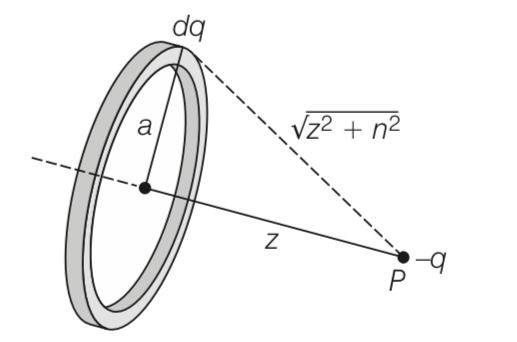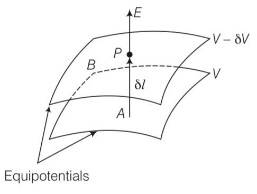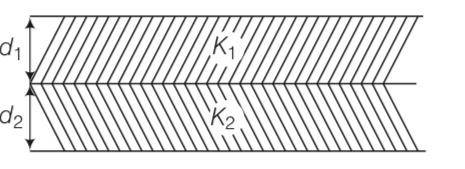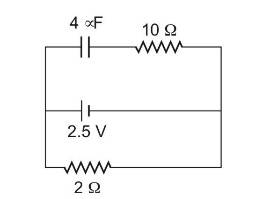Physics Ncert Solutions Class 12th
Get insights from 1.2k questions on Physics Ncert Solutions Class 12th, answered by students, alumni, and experts. You may also ask and answer any question you like about Physics Ncert Solutions Class 12th
Follow Ask QuestionQuestions
Discussions
Active Users
Followers
New answer posted
4 months agoContributor-Level 10
This is a multiple choice answer as classified in NCERT Exemplar
(b), (c) If potential of two point is same then work done is also zero according to relation As W=qdv=q (final potential-initial potential).
Also W=-qdv= -q
For equipotential surface V2-V2=0 and W=0
New answer posted
4 months agoContributor-Level 10
This is a multiple choice answer as classified in NCERT Exemplar
(a), (b), (c) Properties of equipotential surfaces
New answer posted
4 months agoContributor-Level 10
This is a multiple choice answer as classified in NCERT Exemplar
(c) Field lines are always perpendicular to the direction of equipotential surface. The electric field in the in z- direction suggest that equipotential surface are in x-y plane. The shape of equipotential surface depends upon nature and type of distribution of charges.
New answer posted
4 months agoContributor-Level 10
This is a multiple choice answer as classified in NCERT Exemplar
C1 = , C2 =
= =
=
New answer posted
4 months agoContributor-Level 10
This is a multiple choice answer as classified in NCERT Exemplar
(a) The electric potential due to point charge q is given by V=q/4? 0r
It means electric potential due to point charge is same for all equidistant points. The locus of these equidistant points, which are at same potential, form spherical surface.
New answer posted
4 months agoContributor-Level 10
This is a multiple choice answer as classified in NCERT Exemplar
(c) As we know that E= - and potential is always same through out the surface, so according to relation electric field is zero because potential remains same at each point.
New answer posted
4 months agoContributor-Level 10
This is a multiple choice answer as classified in NCERT Exemplar
(c) As W=qdv=q (final potential-initial potential), but the potential at a and b is same in all cases . so work done is equal in all cases.
New answer posted
4 months agoContributor-Level 10
This is a multiple choice answer as classified in NCERT Exemplar
(c) Electric potential are always less in the direction of electric field
E= - and W= qdv . so potential energy also decrease in the direction of electric field
New answer posted
4 months agoContributor-Level 10
This is a multiple choice answer as classified in NCERT Exemplar
(d) We know that I= = = 1 A
The potential difference across 2 ohm = 1 (2)= 2V
As Q=CV = 4 2= 8 μC
New answer posted
4 months agoContributor-Level 10
This is a short answer type question as classified in NCERT Exemplar
Let us take a point p to be at a distance z from the center of ring
V=K = =

Taking an Exam? Selecting a College?
Get authentic answers from experts, students and alumni that you won't find anywhere else
Sign Up on ShikshaOn Shiksha, get access to
- 65k Colleges
- 1.2k Exams
- 686k Reviews
- 1800k Answers




